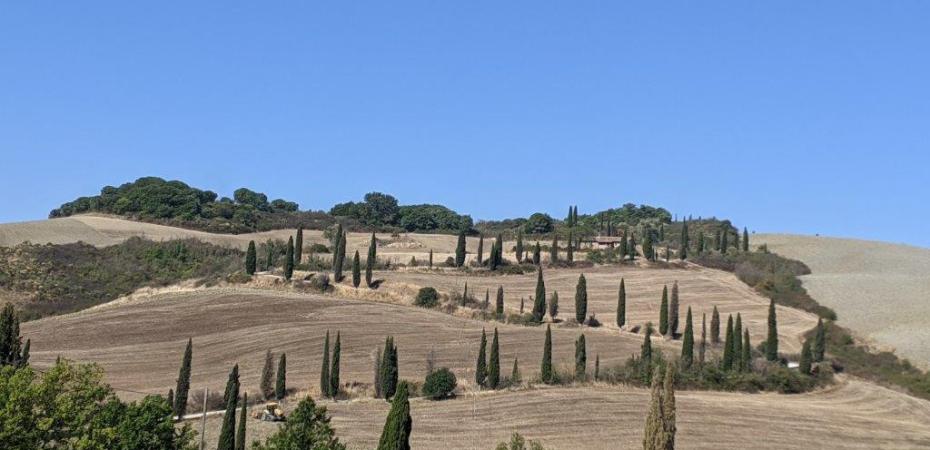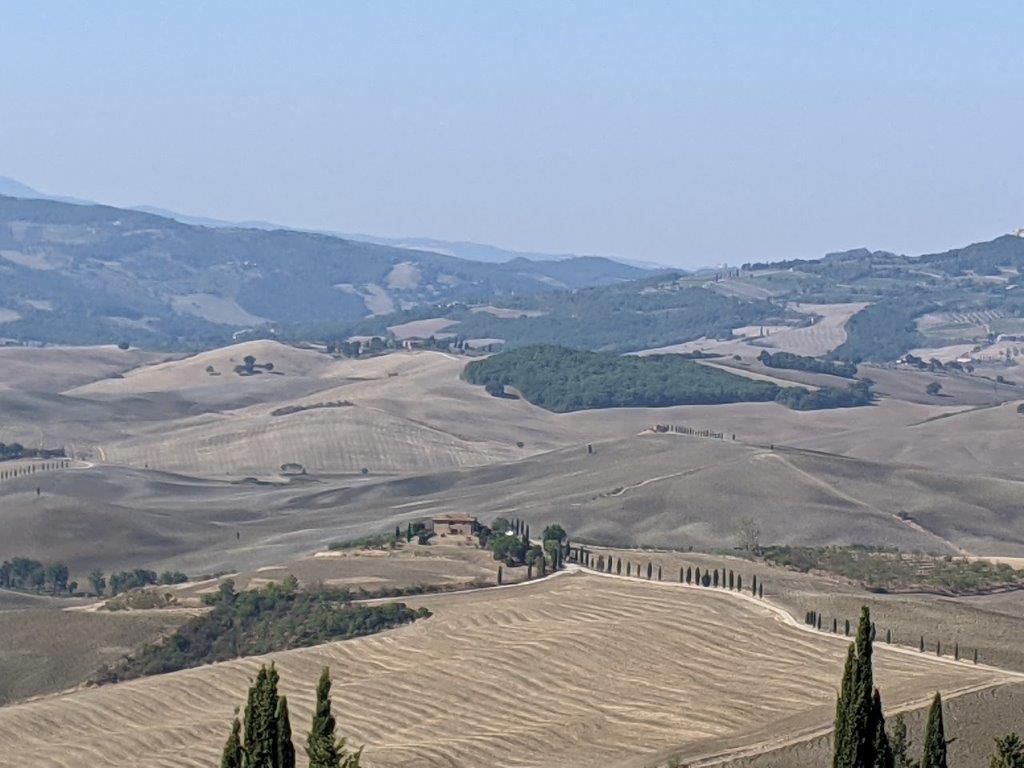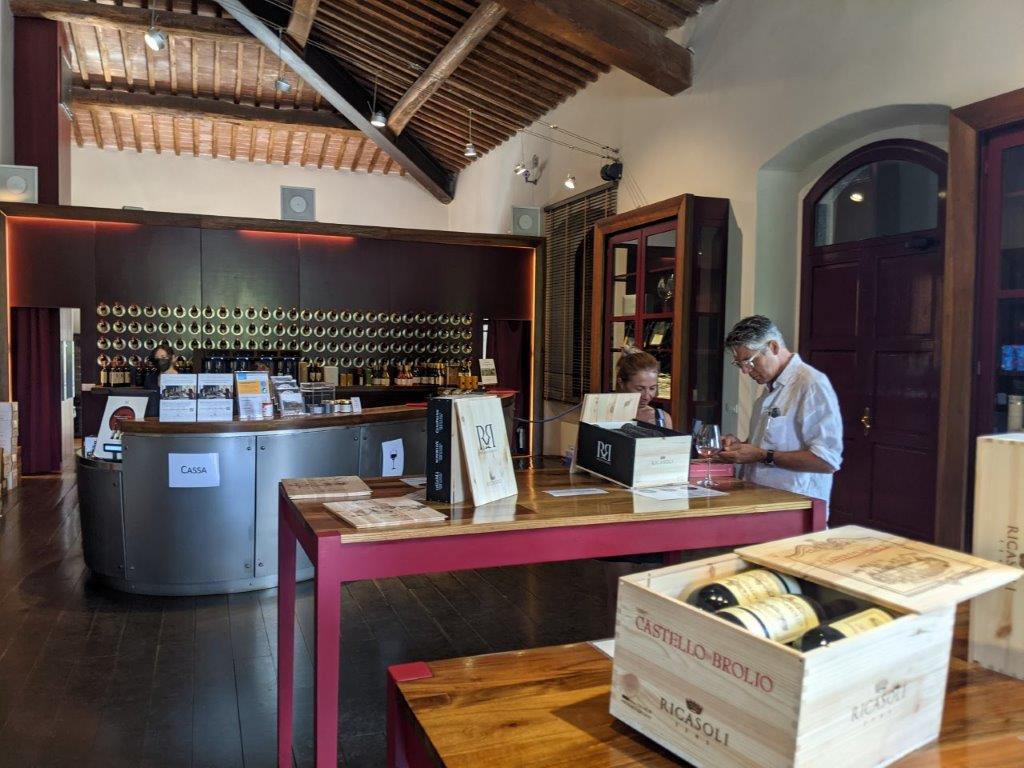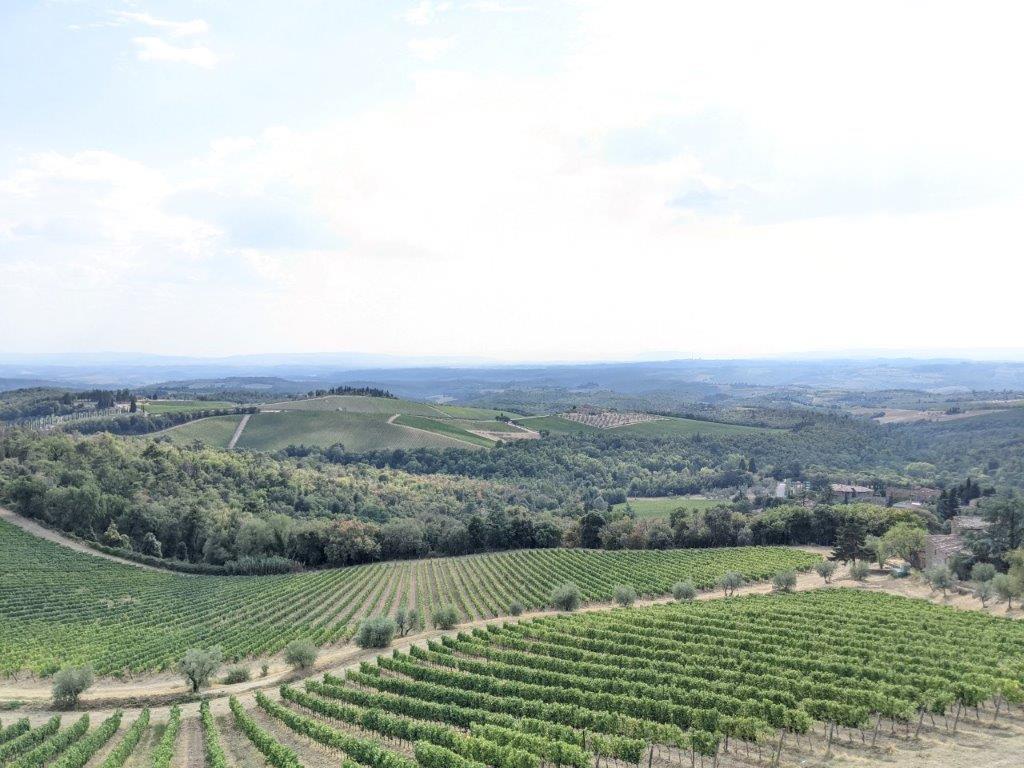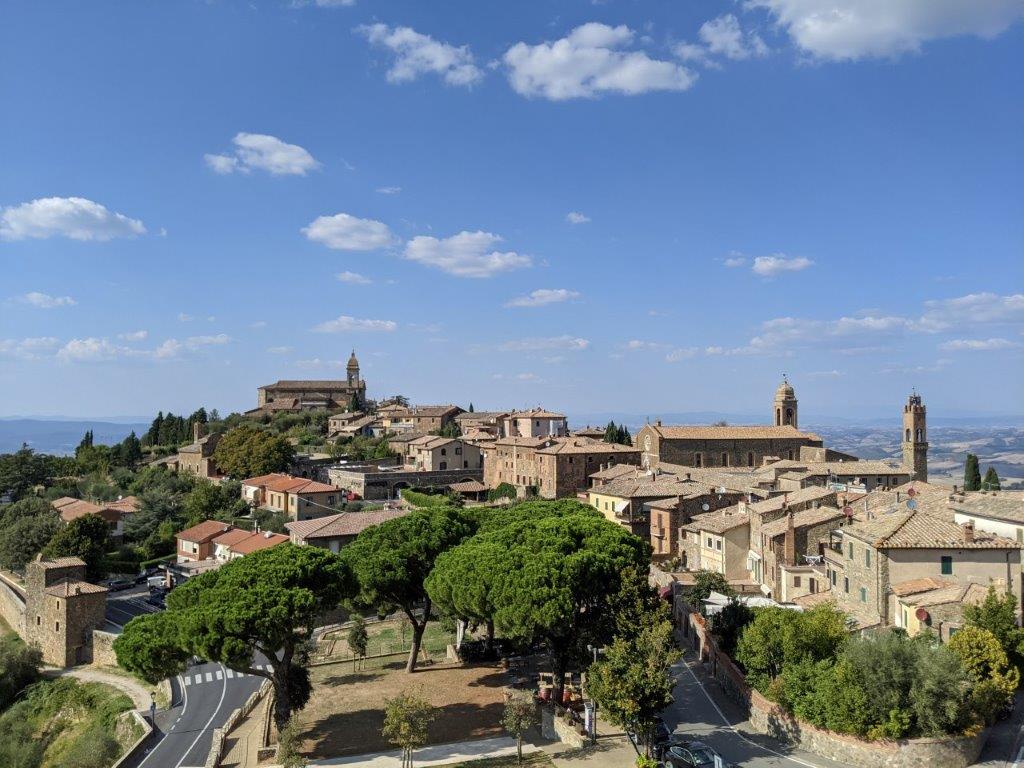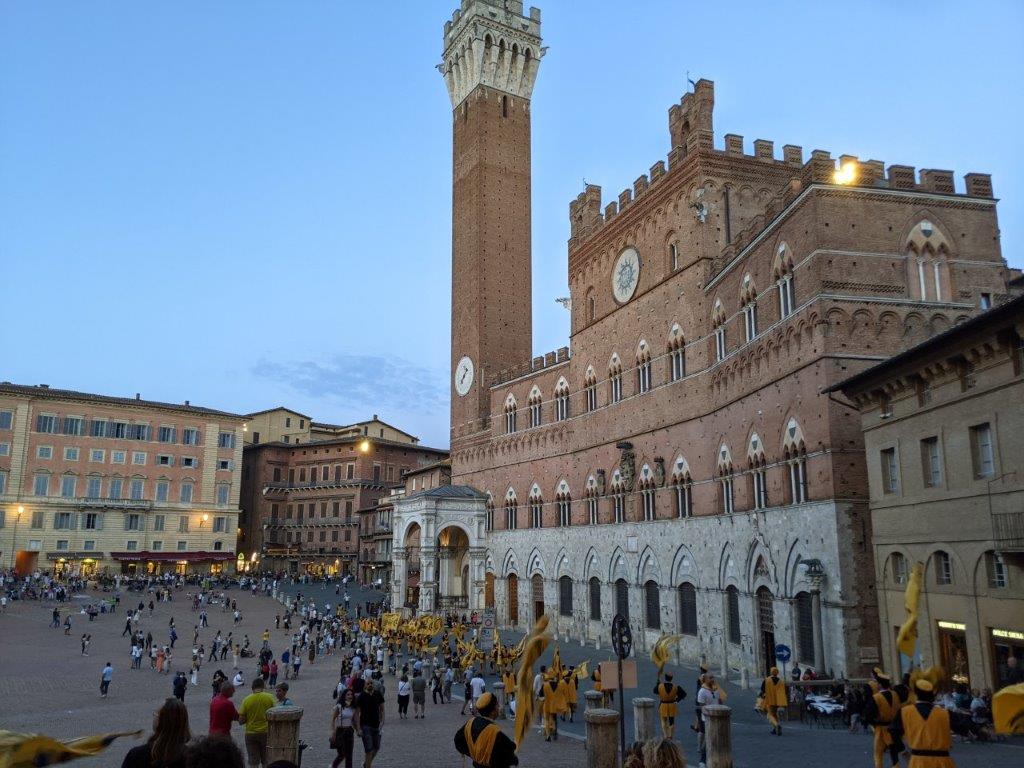Toscana, or Tuscany as it’s called in English, is one of the most famous Italian regions for many different reasons. Everyone knows Firenze with its exquisite art, Pisa for its leaning tower, medieval towns and rolling hills in Toscana’s countryside, or some of the most famous Italian wines – like Chianti or Montepulciano. Whatever you are after, Toscana really offers so many things to do, chill or explore. On this trip, I explore the wines of Chianti, Montepulciano and Montalcino, the iconic rolling hills and the medieval towns in central Tosacana.
Wine tasting in Chianti
Chianti is one of the best known Italian red wines. It comes from the Chianti region which is located along the way between Firenze and Siena. Chianti is really beautiful and small region with most of the hillsides covered by vineyards or olive groves and cute villages, all in a very picturesque setting indeed.
You can’t miss Chianti as all (or at least most) villages have ‘in Chianti’ in their names. The whole point of visiting the area is to drive between the towns, enjoying the views and stopping at winemakers for some tasting. You can do that on a quick pass though visit in a couple of hours or over several days while staying at an agriturismo in the region. All depends on your time and interest.
We did a 1 day visit in Chianti as part of a 3-day tour around the Siena region of Toscana. In the one day in Chianti we managed to see two towns, have a lunch, visit two winemakers and a castle. Not to forget drive around endlessly on paved and many unpaved roads enjoying the spectacular views.
Wine in Chianti
Sangiovese is the main sort of grape that is grown in Toscana, and I think all of Italy too. Depending on the region it can produce different wine type though. In Chianti the main one is Chianti classico. It’s a quite full body wine, but at the same time not too heavy or difficult to drink. No wonder that I became Italy’s most famous wine. The logo of Chianti classico is the black rooster and most wine makers will also make the grand cru version that has been aged for longer.


Chianti has numerous winemakers and you can visit many of them. Many will make it an industry and you need to reserve a 1h tour and a wine tasting. They’ll also charge a fee for the tasting. I’m not a big fan of that though and if possible prefer smaller producers, that make the wine tasting more personal.
We went to Pomona, which is close to Castellina. We tried their white wine, two types of reds (they’re not quite classico), the Chianti classico and the grand cru. All of their reds were delicious, obviously the grand cru the most, however the white wine wasn’t quite there yet. The owner was super nice and she didn’t charge us for the tasting, even if we drank quite a bit, as long as we bought some wine. In addition to wine they also have good olive oil.
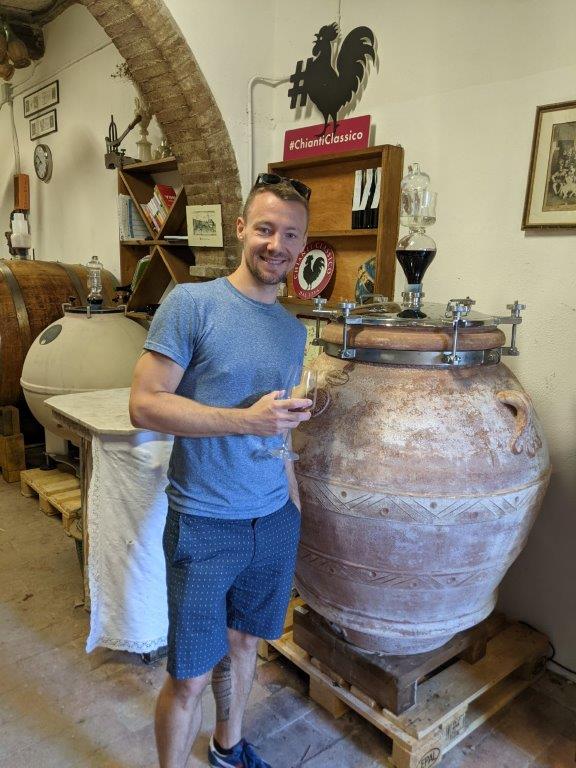

For contrast we also went to Brolio to the Barone Ricasoli wine cellar, which is supposed to be the (or one of the) oldest in Italy. In the tasting room you can try 2 wines plus a special for €10. We obviously tried the Chianti classico and the grand cru, and they were really good. They also have Vin Santo, which is a dessert vine similar to Sauterne.
Then we visited the Castello di Brolio of Barone Ricasoli, especially see the view from the back. It’s €6.50 to enter but it’s highly worth it. With the castle ticket you also get a tasting glass of wine back down in the cellars.

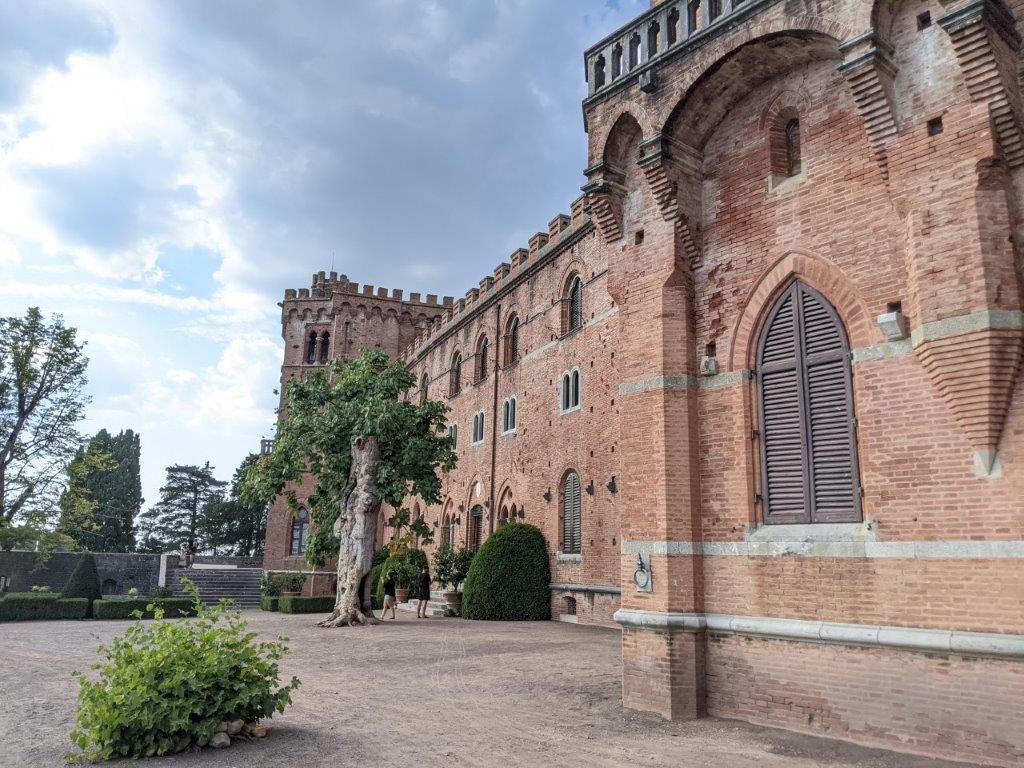
Towns in Chianti
There are many very pretty towns around the Chianti region. They’re all quite small, so you don’t need lots of time. You can have an easily walk around in less than 30 min, depending on how much you wanna stop at shops though. We started with Castellina in Chianti for breakfast and coffee at (obviously) Bar Italia, and had a quick stroll around.

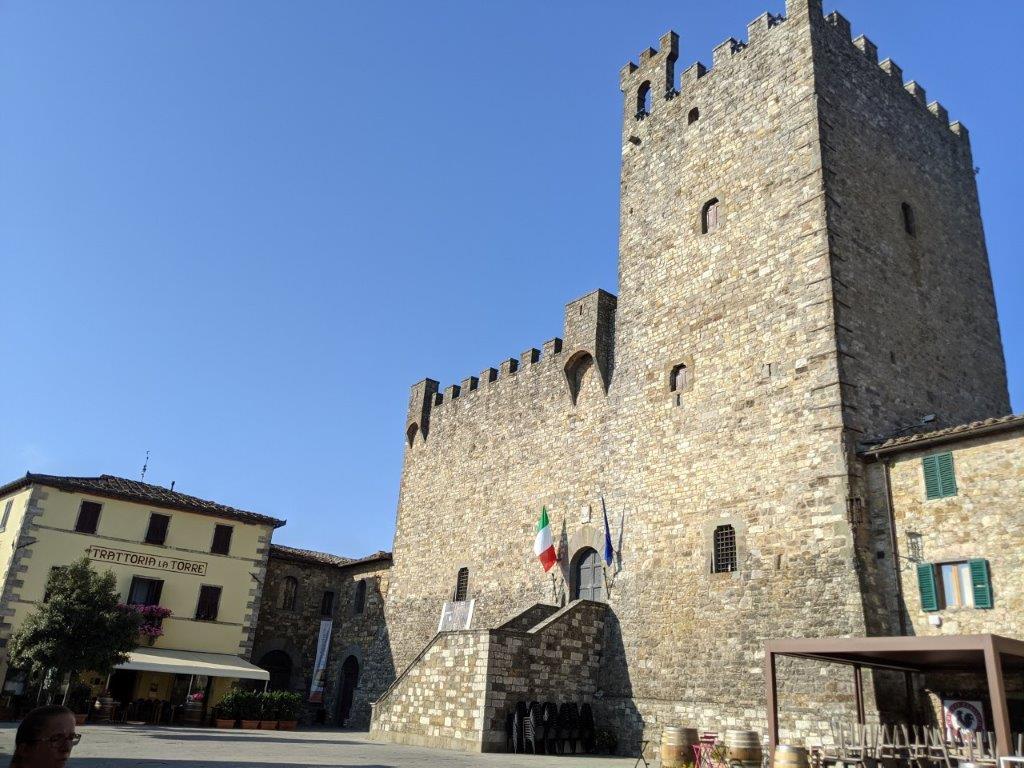
Radda in Chianti is a little bigger.
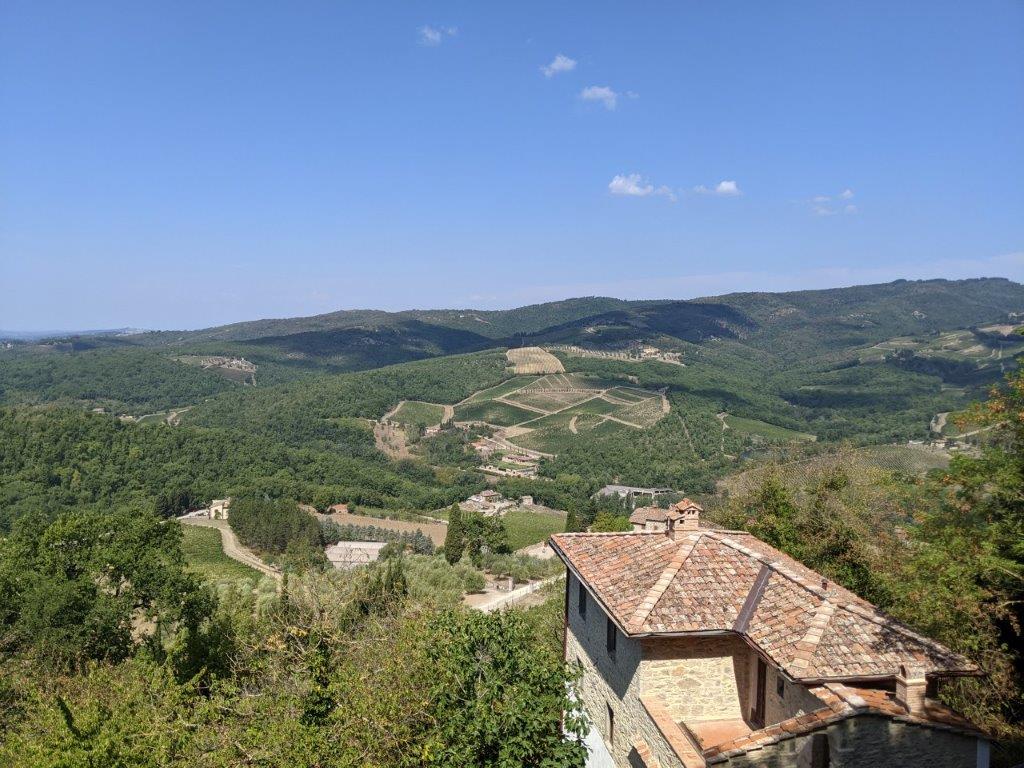

We had lunch at the La Bottega di Giovannino which was a simple and good choice. There are not that many options and this one seems to be quite busy. We were lucky to get a spot. The topical Toscana type of pasta – pici, was very delicious; also the gnocchi were superb. Chinghiale (wild boar) is another typical dish.


Montepulciano, Montalcino and Val d’Orcia
The whole region south of Siena – Val d’Orcia – is the most famous for the typical views over hilly fields and cypress lined roads. Whereas the two towns of Montepulciano and Montalcino are famous for two traditional types of wine, the vino Nobile and Brunello, respectively.
Montepulciano is the bigger one and is very well worth spending several hours there. It’s really picturesque on the hilltop with fascinating views all around.

The main square, piazza Centrale is super nice and it’s well worth going up the tower (there’s a lift for the most of it), and stroll around the main street and the tiny little side streets and steps connecting the various levels of the town.




The vino Nobile di Montepulciano is famous here. You can do some tasting in one of the numerous enoteca, and/or have a bottle over lunch. For lunch you can grab one of the cute terraces on town. We went to Trattoria di Cagnano and the food was great.


Montalcino, on the other hand, is a much smaller cousin, but with a more famous wine and a little cuter. The Brunello is aged for 5 years and bottles are rarely sold for less than €30. In town, you can do tasting at most of the bars, or sample it before buying at an enoteca.
At the beginning of the town, there is a fort and it’s nice to climb up the walls for the views. They also have a bar if you want to start the wine tasting already.
And then walk around the cute streets. It’s much smaller than Montepulciano though and you won’t need much time walking around.


Val d’Orcia and its views was listed as a UNESCO world heritage site. It’s quite worth driving around and stopping at various viewpoints along the road. You’ll see them quite easily and there will always be some cars stopped and people taking pictures.
The must sees are definitely the Cipressi di San Quirico d’Orcia.
The road with cypress trees best viewed from La Foce.

As well as the Quercia delle Checche.
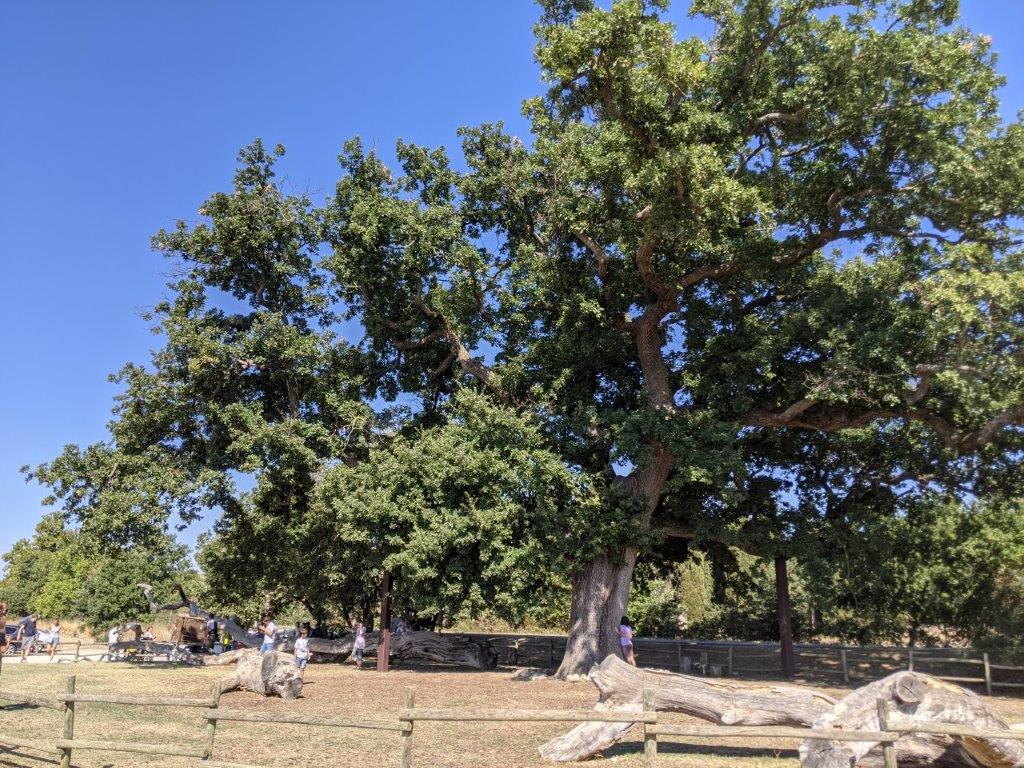
There are numerous small towns in the area. We stayed in Pienza that is famous for Pecorino cheese. It’s a cute small town full with tourists.

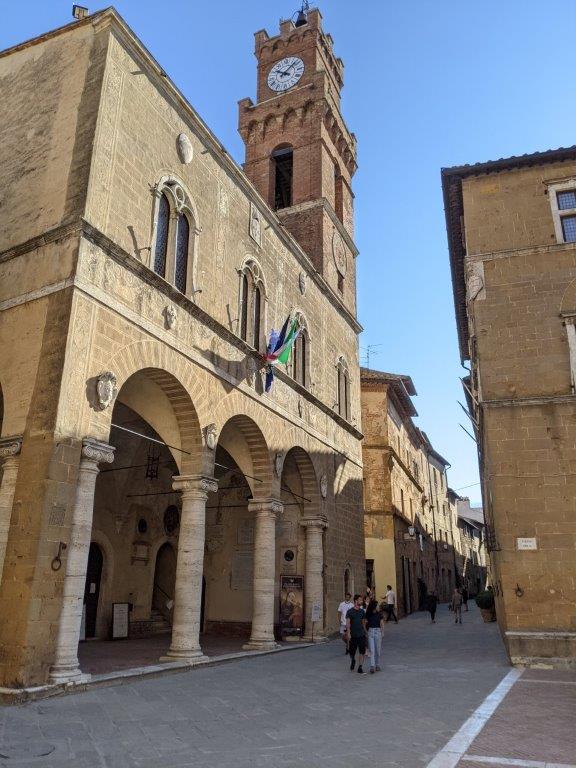
There were so many people that restaurants were all fully booked and it was almost impossible to get a table for dinner. We ended up going to La Mensa del Conte. It was ok, but not great. The pici were good but cooked more than I would have wanted, so I wouldn’t recommend it really.
There are many other small towns that you can visit if you have time, including San Quirico, Bagno Vignioni, etc. Or just drive around and stop at pretty viewpoints and enjoy this beautiful landscape.
Siena
Siena is a quintessential Italian medieval town. It’s not too big but also not small either. It’s beautiful though and there are quite some things to see an do. The most recognisable thing is the Piazza del Campo, the main square, that’s shaped in form of a shell on a slope. It’s quite impressive to descent into the square from one the staircases leading down onto it.
We got there on Sunday afternoon and there was a march with flags and drums. Quite a cool thing, though not sure why was that. The whole town was full of the same yellow flags.
The town hall is the big building with the tower at the bottom of the square. You can visit the tower. It’s 400 steps up the tower on a very small staircase. The view is quite worth it.
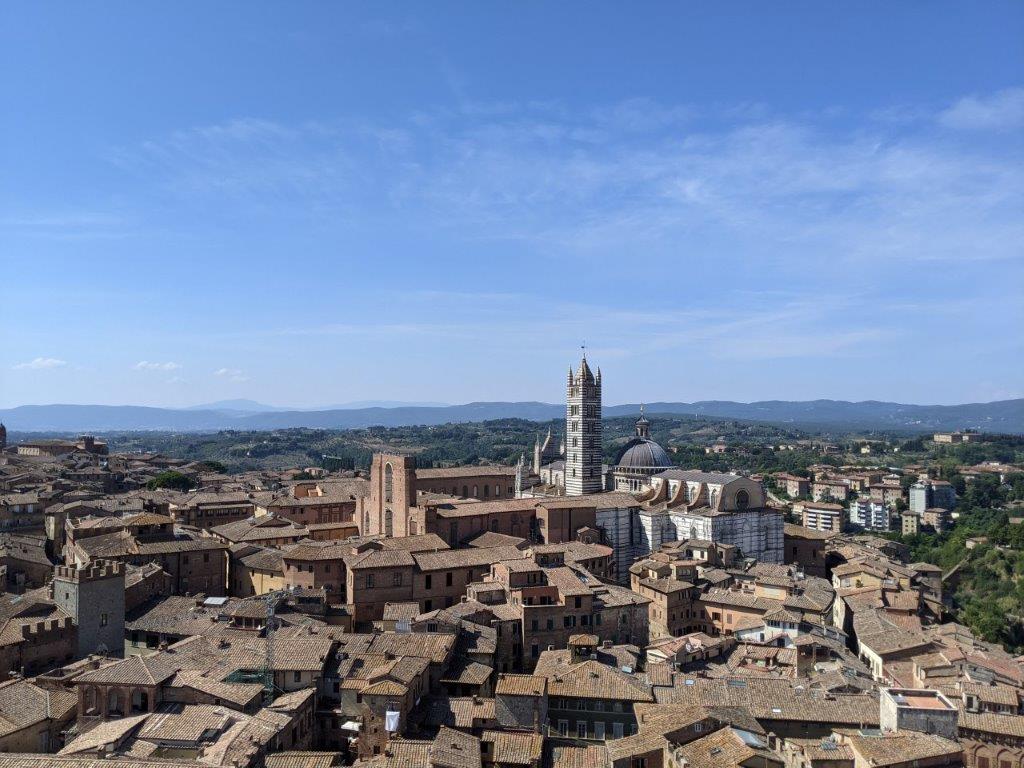
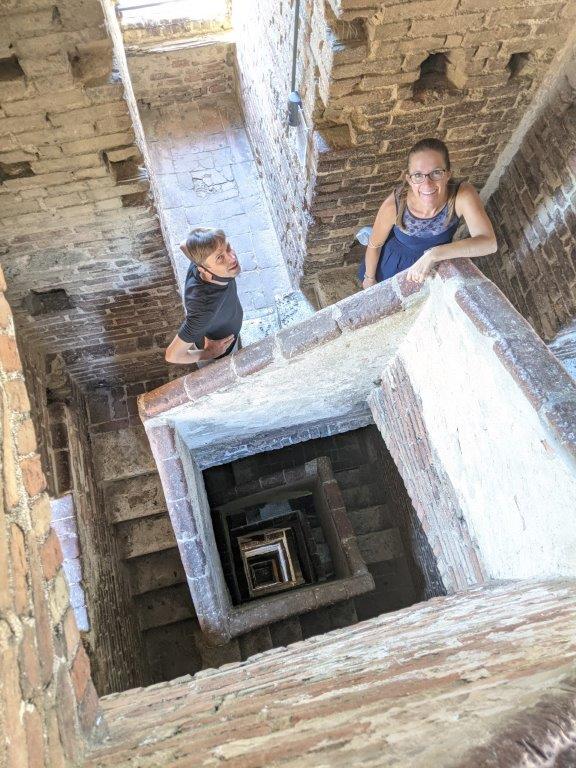


Visiting the duomo is also one of the main things to do. There is a combined €10 ticket that lets you see the duomo from inside and the small library that is very cute.


It also includes a museum of church art and objects, but the best is the panoramic viewpoint you get to though the museum.


Walking around the town streets is very nice and especially atmospheric in the evening.


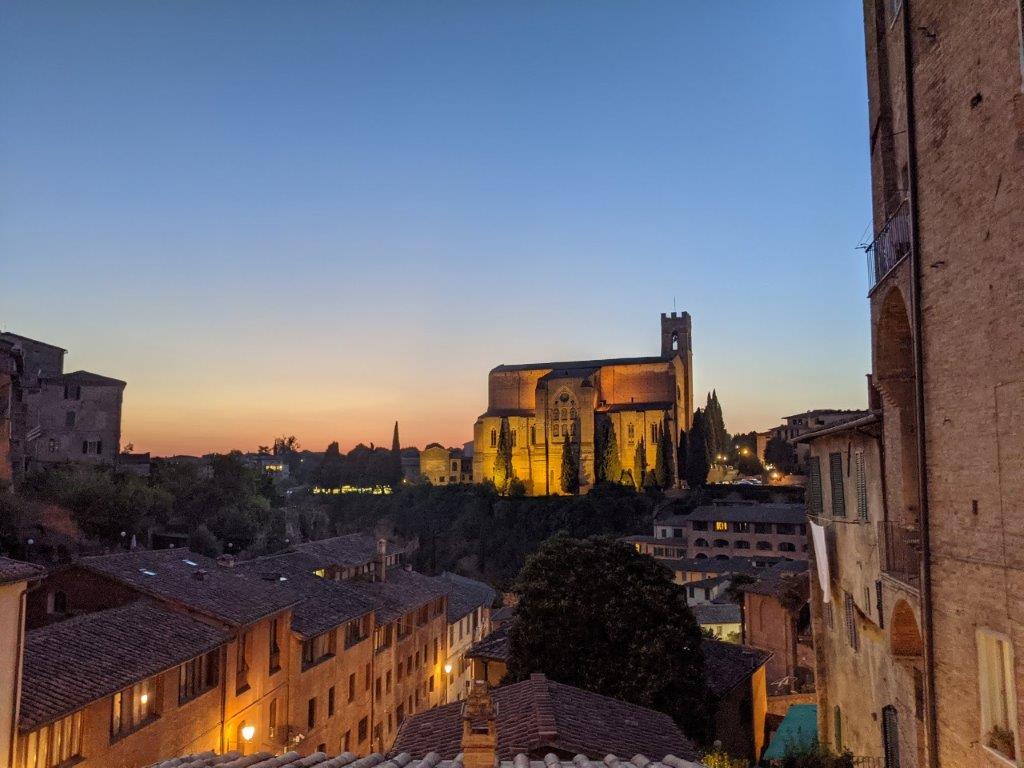
Aperitivo is a typical Italian concept for a drink and a small bite before dinner. The Piazza del Campo is full of bars all around, so just grab a table at one place that’s more of a bar and for €8 you’ll get a drink and quite a generous snack. Not to even mention the view.
There are plenty of restaurants and they were quite booked out, even on a Sunday night. We chose the Osteria Permalico for a late dinner. It was pretty good and very economical too.
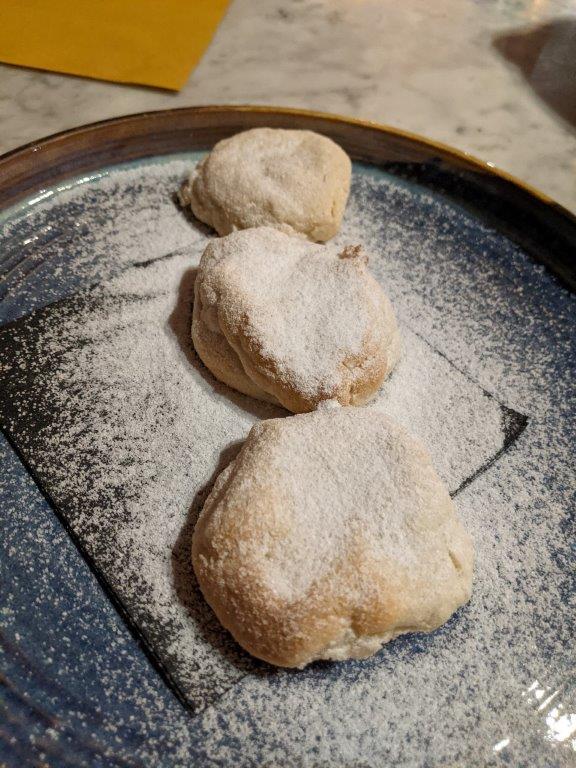


Trip made in September 2021.
